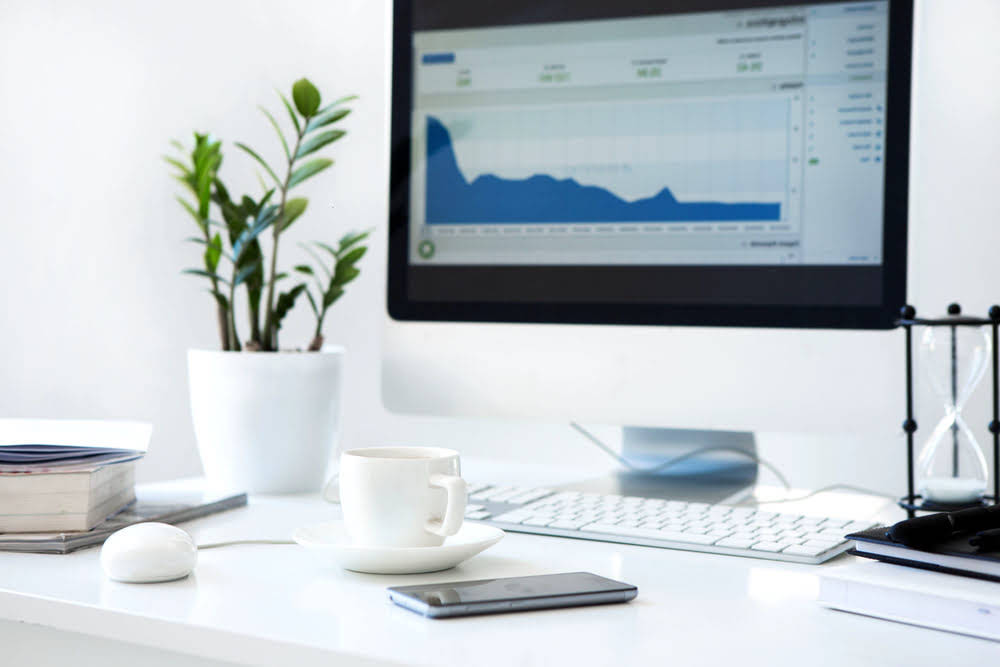Content

The Center for Farm Financial Management at the University of Minnesota has been a key player in this evolution. The following information applies to the financial statements and ratio analysis produced by the FINPACK software.
2021 Chinese Private Banking Performance: Profiles for Leading Players Including WeBank, Suning Bank and Bank of Sanxiang – Yahoo Finance
2021 Chinese Private Banking Performance: Profiles for Leading Players Including WeBank, Suning Bank and Bank of Sanxiang.
Posted: Mon, 29 Nov 2021 16:45:00 GMT [source]
Examples of such items are plant, equipment, patents, goodwill, etc. Valuation of net fixed assets is the recorded net value of accumulated depreciation, amortization and depletion. Net fixed assets represent long-term investment, so this percentage indicates relative capital investment structure. A firm’s P/E ratio is its stock price divided by its earnings per share . Two widely usedleverage ratiosare the debt-to-equity ratio and the equity multiplier. Price/Cash Flow Ratio – The price per share of a firm divided by its cash flow per share.
How Does Financial Ratio Analysis Work?
It gives you an idea of how well the company can meet its obligations in the next 12 months. Type Of Financial RatioFinancial ratios are of five types which are liquidity ratios, leverage financial ratios, efficiency ratio, profitability ratios, and market value ratios. These ratios analyze the financial performance of a company for an accounting period. Cash Ratio Is UsefulCash Ratio is calculated by dividing the total cash and the cash equivalents of the company by total current liabilities. It indicates how quickly a business can pay off its short term liabilities using the non-current assets. Long-term creditors are also interested in the current ratio because a company that is unable to pay short-term debts may be forced into bankruptcy.
What is PE and CE?
PE-Put Option and CE- Call Option are terms in option trading. Theoretically , CE stands for ‘Right to Buy’ and PE stands for ‘Right to Sell’. When market goes up, you should buy CE. When market goes down, you should buy PE.
The current ratio only considers short term accounts, and as an equity holder you care about the firm’s long-term prospects. Debt to Asset Ratio – A firm’s total debt divided by its total assets.
Debt Ratio
Many entrepreneurs decide to start their own businesses in order to earn a better return on their money than would be available through a bank or other low-risk investments. However, it is important to note that many factors can influence profitability ratios, including changes in price, volume, or expenses, as well as the purchase of assets or the borrowing of money. Some specific profitability ratios follow, along with the means of calculating them and their meaning to a small business owner or manager.
Ratio analysis provides this information to business managers by analyzing the data contained in the firm’s balance sheet, income statement, and statement financial ratios of cash flows. Return on assets is a financial ratio that shows the percentage of profit a company earns in relation to its overall resources.
Marketable SecuritiesMarketable securities are liquid assets that can be converted into cash quickly and are classified as current assets on a company’s balance sheet. Commercial Paper, Treasury notes, and other money market instruments are included in it.
How much cash, working capital, cash flow, or earnings do you get for each dollar you invest? These are also referred to as «market ratios,» because they gauge how strong a company appears on the market. The operating profit margin shows a company’s profits before taxes and interest payments.
Management And Growth Ratios
The ratios are a way for startups to show investors that the business is financially solid. The ratios related to accounts receivable are especially important for small businesses seeking loans. According to peer-to-peer lending marketplace Funding Circle , banks appraise eligible receivables at 70%–80% of their value for asset-backed loans.

They’re also used by financial auditors who want insight into a company’s financial statements. Profitability Ratios determine your organization’s ability to generate profit relative to revenue, operating costs, balance sheet assets and shareholder equity. A debt to total assets ratio of 72% may be acceptable at a growing company where long-term loans were needed to purchase labor saving equipment and construct more efficient facilities . As ABC’s debt to equity ratio of 2.57 indicates, the corporation is using a large amount of creditors’ money in relation to its stockholders’ money. We would say the company is highly leveraged and that could be a factor in whether the corporation can borrow more money if needed for an emergency or economic downturn. Since Beta Company is not a manufacturer or retailer, it will have little or no inventory.
Coverage Ratios
Higher net profit margins show that the company is efficiently converting sales into profit. Look at similar companies to benchmark success as net profit margins will vary by industry. This percentage represents tangible or intangible property held by businesses for use in the production or supply of goods and services or for rental to others in the regular operations of the business.

Yes, the old ugly, growing, operating loan is gone, but it will return. If your intended purchase will decrease your working capital, is that bad? Again, it depends on how adequate it was before, and what it will be afterwards. The easiest way to do this is to keep a spreadsheet of the ratios you calculate over time.
Important Financial Ratios Made Easy
Since the difficulties of the recession in the late 1980s liquidity, both short term and long term, has increased in importance. Are used to perform quantitative analysisand assess a company’s liquidity, leverage, growth, margins, profitability, rates of return, valuation, and more. Return on assets reveals how well a firm uses its assets to generate income. Low prices, high operating expenses or production problems are all possible causes of a low operating profit margin. The debt to asset ratio increases when assets are purchased with borrowed money and decreases when assets are sold and the debt is repaid. If solvency is a problem, fixing it usually requires the sale of assets and repayment of debt. Look at your working capital figure and think in terms of adequacy.
Financial ratios can be used to analyze trends and to compare the firm’s financials to those of other firms. Ratios are calculated by dividing one number by another, total sales divided by number of employees, for example. Ratios enable business owners to examine the relationships between items and measure that relationship. Ratios are aids to judgment and cannot take the place of experience. But experience with reading ratios and tracking them over time will make any manager a better manager. Ratios can help to pinpoint areas that need attention before the looming problem within the area is easily visible. Return on Equity is a measure of a company’s profitability that takes a company’s annual return divided by the value of its total shareholders’ equity (i.e. 12%).
MBSB posts net loss of RM104.58mil, lower revenue in Q3, impacted by strict Covid-19 containment measures – New Straits Times Online
MBSB posts net loss of RM104.58mil, lower revenue in Q3, impacted by strict Covid-19 containment measures.
Posted: Mon, 29 Nov 2021 11:46:39 GMT [source]
The ratio gives details about how much of a revenue increase will the company have with a specific percentage of sales increase – which puts the predictability of sales into the forefront. Important Profitability RatiosProfitability ratios help in evaluating the ability of a company to generate income against the expenses. These ratios represent the financial viability of the company in various terms. The current ratio expresses the relationship of a current asset to current liabilities. The current ratio is also known as the working capital ratio and the quick ratio is also known as the acid test ratio.
A poor net profit margin—or one that is declining over time—can be an indication of a variety of problems. Perhaps you’re not doing a good job of keeping tabs on consumable office supplies, or maybe you have an employee theft problem. Liquidity ratios are vital with penny stocks, because smaller, newer companies often have a hard time paying all of their bills before they become stable and established. Ratios give you a picture of aspects of a company’s financial health, from how well it uses its assets to how well it can cover its debt.
In order to evaluate the level of profit, profit must be compared and related to other aspects of the business. Profit must be compared with the amount of capital invested in the business, and to sales revenue. The Price Earnings Ratio (P/E Ratio is the relationship between a company’s stock price and earnings per share. It provides a better sense of the value of a company. Interest Coverage Ratio is a financial ratio that is used to determine the ability of a company to pay the interest on its outstanding debt.

They help companies see problematic areas and put measures in place to prevent or ease potential issues. Liquidity ratios provide information about a firm’s ability to meet its short-term financial obligations. They are of particular interest to those extending short-term credit to the firm. Two frequently-used liquidity ratios are the current ratio and the quick ratio. Financial ratios can be an important tool for small business owners and managers to measure their progress toward reaching company goals, as well as toward competing with larger companies. Ratio analysis, when performed regularly over time, can also help small businesses recognize and adapt to trends affecting their operations. Often, a small business’s ability to obtain debt or equity financing will depend on the company’s financial ratios.
General Information On Ratios
A cash flow Statement contains information on how much cash a company generated and used during a given period. Even so, investors have been willing to pay more than 20 times the EPS for certain stocks if hunch that future growth in earnings will give them an adequate return on their investment. If, for example, a company closed trading at $46.51 a share and EPS for the past 12 months averaged $4.90, then the P/E ratio would be 9.49. Investors would have to spend $9.49 for every generated dollar of annual earnings.
- It doesn’t account for taxes you’ll pay on dividends and capital gains, so you’ll have to take extra steps to calculate how your personal tax rate will affect your earnings.
- Your Debt Ratio measures the ratio of total debt to total assets, which determines the extent of your business’s leverage or the percentage of assets financed by debt.
- In this scenario, the debt-to-asset ratio shows that 50% of the firm’s assets are financed by debt.
- Changes from year to year are attributable to two major categories increases in Unrestricted Net Assets and changes in Restricted Net Assets .
- They allow you and your investors to compare your business to those of your competitors, to see how you’re faring compared to market norms.
- Yes, the old ugly, growing, operating loan is gone, but it will return.
It needs an accompanying narrative to illustrate the point and show the state of the business’ finances. One way to simplify the data and make it more accessible for investors, lenders and internal stakeholders is using financial ratios. SG&A expenses such as sales commissions and incentives tend to vary directly with overall sales volume, while expenses such as call centers and customer service tend to be relatively fixed. A company with a high level of fixed SG&A expenses should see its ratio decline as sales increase, and vice versa.
❇ لو مهتم بمعرفة بعض جوانب #التحليل_المالي او اللي نسميه #FinancialRatios#النسب_المالية
❇ لو إنت #رائد_أعمال او صاحب مؤسسة او شركة صغيرة او متوسطة ولك تعامل #الموردين و #العملاء
وتحب تفهم او تعرف كيف ترفع من #السيولة_النقدية #الكاش وتقلل من مشاكل عدم توفرها، فتابعني من فضلك— Mohamed Basem Hemedh (@MhemedhG) November 28, 2021
This is a valuable measure because it reveals potential resources that the hospital may have available for cash flow if necessary. This category evaluates the health of a hospital’s capital structure, measuring how a hospital’s assets are financed and how able the hospital is to take on more debt. This ratio measures the average number of days in the collection period. A larger number of days represent cash that is unavailable for use in operations.
But automating the processes behind the ratios gives you a clearer, more accurate and easier-to-understand picture of your company’s finances. This is a solvency ratio, which indicates a firm’s ability to pay its long-term debts. The debt to equity ratio also provides information on the capital structure of a business, the extent to which a firm’s capital is financed through debt. This is an efficiency ratio, which indicates the average liquidity of the inventory or whether a business has over or under stocked inventory. This ratio is a rough indication of a firm’s ability to service its current obligations.
If the ratio is high, then it reflects the underutilization of resources, and if the ratio is low, then it can lead to a problem in repayment of bills. Revenue a hospital would expect to collect for services provided less contractual allowances. Net Patient Service Revenue is the primary source of revenue for a hospital. This category evaluates the ability of a hospital to generate a surplus. GoCardless is authorised by the Financial Conduct Authority under the Payment Services Regulations 2017, registration number , for the provision of payment services. Learn more about how you can improve payment processing at your business today. Rosemary Carlson is an expert in finance who writes for The Balance Small Business.
Author: Matt Laslo


